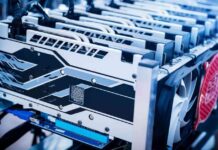The rise of artificial intelligence (AI) applications has brought to light the need for a different way of looking at computing power, according to Render Network. While traditional cloud providers like AWS, Google Cloud, and Microsoft Azure are struggling to keep up with the demand for AI, decentralized compute networks are stepping up as viable alternatives. The Centralization Bottleneck The increase in AI usage, as seen with OpenAI’s ChatGPT reaching over 400 million weekly users by early 2025, shows just how much compute resources are needed. However, relying on centralized infrastructure has led to high costs and limited availability. Decentralized compute networks, powered by consumer-grade GPUs, offer a scalable and affordable solution for various AI tasks such as offline learning and edge machine learning. Why Consumer-Grade GPUs Matter Distributed consumer-grade GPUs provide the parallel compute power necessary for AI applications without the drawbacks of centralized systems. The Render Network, established in 2017, has been leading the way in this shift, enabling organizations to efficiently run AI tasks across a global network of GPUs. Partners like the Manifest Network, Jember, and THINK are utilizing this infrastructure for groundbreaking AI solutions. A New Kind of Partnership: Modular, Distributed Compute The collaboration between the Manifest Network and Render Network showcases the advantages of decentralized computing. By merging Manifest’s secure infrastructure with Render Network’s decentralized GPU layer, they offer a hybrid compute model that optimizes resource utilization and cuts costs. This approach is already in motion, with Jember utilizing the Render Network for asynchronous workflows and THINK backing onchain AI agents. What’s Next: Toward Decentralized AI at Scale Decentralized compute networks are opening doors for training large language models (LLMs) at the edges, enabling smaller teams and startups to access affordable compute power. Emad Mostaque, founder of Stability AI, emphasized the potential of distributing training workloads globally to enhance efficiency and accessibility. RenderCon highlighted these advancements, with discussions on the future of AI compute involving industry leaders like Richard Kerris from NVIDIA. The event stressed the significance of distributed infrastructure in shaping the digital landscape, offering modular compute, scalability, and resilience against centralized bottlenecks. Shaping the Digital Infrastructure of Tomorrow RenderCon wasn’t just about showcasing GPU capabilities but also about redefining control over compute infrastructure. Trevor Harries-Jones from the Render Network Foundation highlighted the role of decentralized networks in empowering creators and ensuring high-quality output. The partnership between Render Network, Manifest, Jember, and THINK demonstrates the potential of decentralized compute to revolutionize AI development. Through these partnerships and innovations, the future of AI compute is poised to become more distributed, accessible, and open, addressing the increasing demands of the AI revolution with efficiency and scalability.
Leveraging AI’s Power through Decentralized Computing Networks
1182














